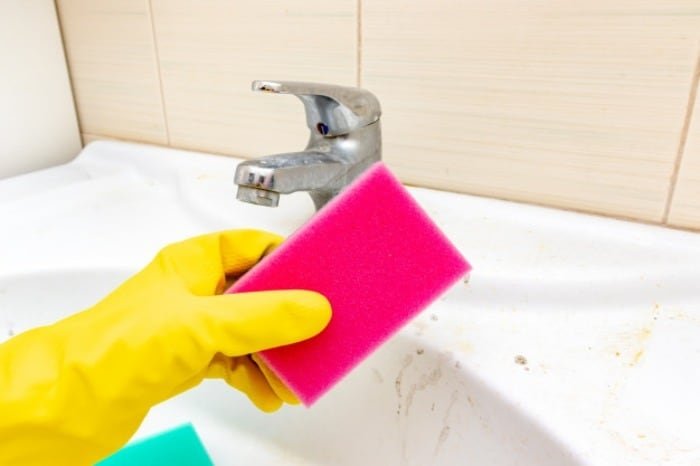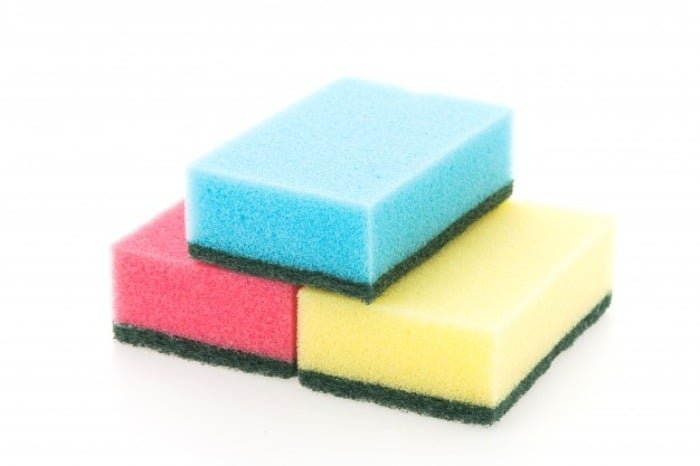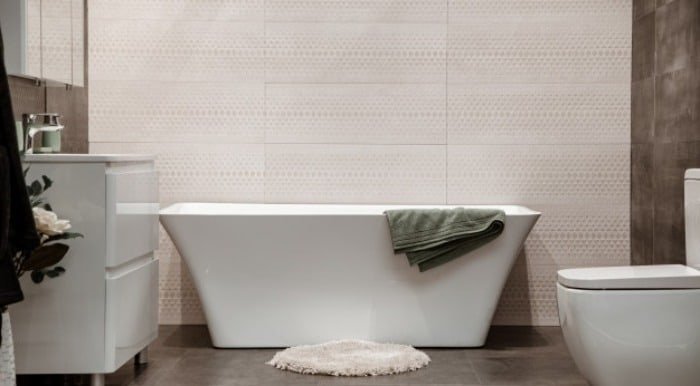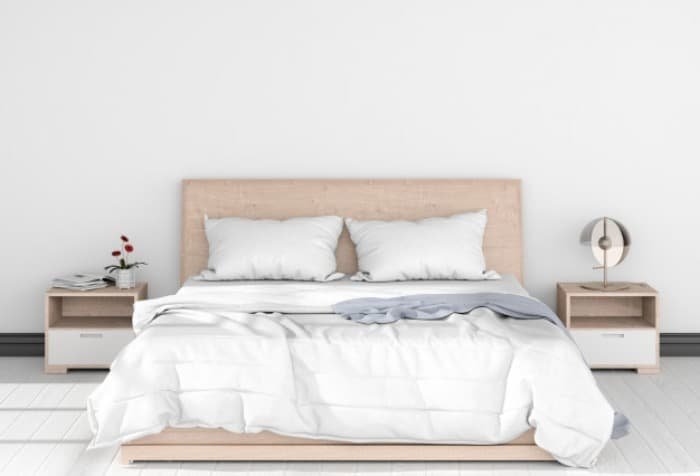Get to know the dirtiest items and places in your home
No matter how tidy you are, there will always be certain spots and items in your home that remain dirty. These are often the areas you might forget during cleaning.
Our intention in discussing these matters is not to create anxiety or make you feel like you’re not careful about cleanliness. We simply want you to recognize often overlooked areas and items so you can prioritize and clean them effectively.
The Dirtiest Places in Your Home You May Not Realize
Cutting Board
This item is like a restaurant for germs, as raw meat contains bacteria like salmonella. When cutting meat on the board, it comes into direct contact with these germs. Thus, it’s essential to clean it properly after use.
If your cutting board is plastic, you can place it in the dishwasher or disinfect it with boiling water. If it’s wooden, clean it with disinfectant solutions.
Bathroom Faucet
If you pay attention, you’ll notice that faucets can also accumulate significant dirt. People often forget to clean the faucet after washing their hands. So, remember to clean it after you wash your hands.
By cleaning, we mean focusing on the underparts and crevices of the faucet. It’s advisable to unscrew the faucet occasionally and soak parts like the spout invinegarfor 15 minutes for disinfection, then scrub the underlying areas with a brush and cleaning solution.

Light Switches, Toilet Flush Handles, and Fridge Handles
These are places that are frequently used by many people, making them very likely to accumulate dirt and grime. Don’t forget to incorporate cleaning these into your daily and weekly cleaning routine. Spray a multi-surface cleaner on a microfiber cloth and wipe these items down for peace of mind.
Salt Shaker
Even though it’s not large, it can be a breeding ground for germs and is considered one of the dirtiest items in any household. To keep salt shakers clean, the best practice is to wash your hands before using them and to clean the shakers after each use.
Top of Cabinets
If you take a look at the tops of your cabinets, you’ll find a lot of dust and grime. Therefore, it’s a good idea to check this area every couple of months.
Use a ladder to access the tops of the cabinets, vacuum up any dirt, and then wipe down the surface with a damp, old cloth.
To prevent these areas from getting dirty in the future, you can cover the tops of your cabinets with newspapers. This way, when it’s time to clean again, you can simply remove the newspaper for quicker and easier cleaning.
Refrigerator Shelves and Compartments
We’ve mentioned several timesSelMagzthat it’s essential to consider cleaning the refrigerator and all its compartments at least once a month, as they often get dirty and grimy due to frequent use.
When cleaning the interior of the refrigerator, avoid using chemical cleaners. For removable parts, soak them inwarm waterand dish soap for 10 to 15 minutes, then rinse and dry them with a cloth.
Dish Sponges and Scrubbers
Dish sponges and scrubbers are perfect spots for germs to thrive. Therefore, do not leave them wet in the sink after washing dishes. While this may not significantly contribute to germ growth, we recommend soaking sponges in disinfectant for five minutes or microwaving them for two minutes to kill all germs.

Kitchen Sink
Since fruits, vegetables, and meat are often washed in the sink, it’s highly likely to accumulate dirt. We recommend cleaning the sink daily with dish soap; otherwise, it can become a breeding ground for germs since it is used several times a day.
Trash Can
No matter how tidy you are, the trash can is a repository for the germs generated by leftover food, meat juices, and other dirty materials, resulting in a bad odor due to the buildup of mold and bacteria.
If you touch the trash can and then other surfaces, you can spread a lot of germs. To prevent this, take the trash out weekly or wash it with hot water.
For a few minutes, spray disinfectant inside and outside the trash can and let it air dry. If the trash can is inside a cabinet, don’t forget to include disinfecting the cabinet doors and handles in your cleaning routine.
Toilet Walls
No matter how well an individual maintains toilet hygiene, it isn’t sufficient. The walls of the toilet should be cleaned with strong disinfectants at least once or twice a week.
For this, sprinkle cleaning solutions on the walls and allow enzymes to dissolve dirt for a few minutes. Once it’s clean, scrub all parts of the walls thoroughly, including corners, with a special brush, and finally rinse with warm water.
Toilet
Sadly, some bacteria can recolonize after each use. To prevent the regrowth of coliform bacteria, you should regularly clean and eliminate these microbes from faucets and handles. The best approach is to use disposable disinfecting wipes for daily cleaning of the bathroom and toilet.
Bathtub
Many bathrooms nowadays do not have bathtubs and only feature small shower spaces. Regardless, you should still prioritize cleaning, including the grout and surfaces in the shower area, since bathrooms always have moisture, which provides an ideal environment for bacteria to thrive.
Therefore, clean the bathroom with disinfectants once or twice a week.

Remote Controls
The dirtiest items in your home include car remotes, TV remote controls, DVD players, and other control devices. Cleaning these requires some effort.
Even if you wipe them with a damp cloth, dirt often hides between the buttons. The best method is to use a cotton swab moistened with alcohol to clean the buttons.
We recommend occasionally using a screwdriver to carefully open the remotes and repeating the cleaning process inside, as fuzz can accumulate over time through the openings, affecting button performance. So, don’t overlook cleaning the insides of your remotes.
Makeup Brushes
Many women have special brushes for their makeup products, and it’s important to know that these brushes are considered some of the dirtiest items in your makeup collection.
Due to oily makeup products, these brushes can harbor bacteria and dirt. When you apply them to your skin, they can transfer germs, potentially causing irritation and breakouts. The same applies to hairbrushes, which can attract oils and dust from the scalp.
You can clean makeup brushes using baking soda and shampoo by mixing a few tablespoonsof baking sodain hot water and soaking the brushes for a few minutes to disinfect them.
Around the Stove
The stove is one of the most frequently soiled areas since it’s used multiple times a day. The stove’s surfaces, surrounding cabinets, and flooring often get splattered with food grease.
If grease stains are not cleaned promptly, they can harden over time, creating a breeding ground for bacteria. Therefore, don’t ignore these small yet critical areas that are often overlooked.
Be careful when moving the stove to clean under it without damaging the gas line, and ensure you clean the oven interior with soapy water every three months.
Bedding
No matter how protective sheets you use, you must prioritize washing and cleaning them, as bedding gathers dirt, dead skin cells, sweat, and dust. Since we spend a lot of time sleeping on pillows and mattresses, body heat and moisture can make these areas a cultivation ground for bacteria.
To clean your bedding, first remove the sheets, then prepare 200 grams or one cup of baking soda and sprinkle it over the mattress. Let it sit for three hours, then vacuum it; this way, the dirt and dust are completely absorbed.

Kitchen Counter
Even if you clean your kitchen counter daily with a cloth, that doesn’t guarantee it is free from bacteria, as items like shopping bags, lunch containers, and unwashed products can create an ideal breeding ground for germs. Research shows that almost one-third of kitchen counters harbor coliform bacteria.
To ensure it’s clean before preparing raw or cooked foods, disinfect the kitchen counter. If you have pets, do not place their food bowls on the counter, and do not allow them to walk on it, as they can carry Staph bacteria. It’s crucial to avoid placing shopping bags on the counter.
Door Handles Among the Dirtiest Items in the Home
Door handles are frequently touched by many different people, making them some of the dirtiest items in a home.
Handles for room doors, cabinets, and front doors are often overlooked during cleaning and can be filled with grime and bacteria. After reading this helpful article, remember to clean and disinfect door handles.
Microwave
How dirty your microwave gets depends on how often you use it throughout the day. For instance, you might use it 30 times a day, which can turn it into a breeding ground for germs, creating perfect habitats for bacteria and microbes.
As you know, bacteria and germs need moisture, food, and heat to thrive. With food particles being present, this creates a risky environment for your health. So prioritize cleaning this appliance seriously.
Toothbrush
The placement of toothbrushes in the bathroom is problematic, as studies show that water droplets from toilet flushing can be projected up to six feet away. We recommend keeping your toothbrush away from such contaminated areas.
Never cover your toothbrush; leave it to dry in the open air. Rinse it well before and after use, and make sure to replace it regularly.
Toothbrush Holder
Toothpaste and toothbrush holders are often forgotten or not thoroughly cleaned.
We advise you not to overlook cleaning the toothbrush holder. To do so, remove it from its place and soak it in a basin filled with warm water and a little bleach for half an hour to disinfect it.
After half an hour, wash it to remove the bleach, then scrub the undersides and corners with an old toothbrush under running water.







